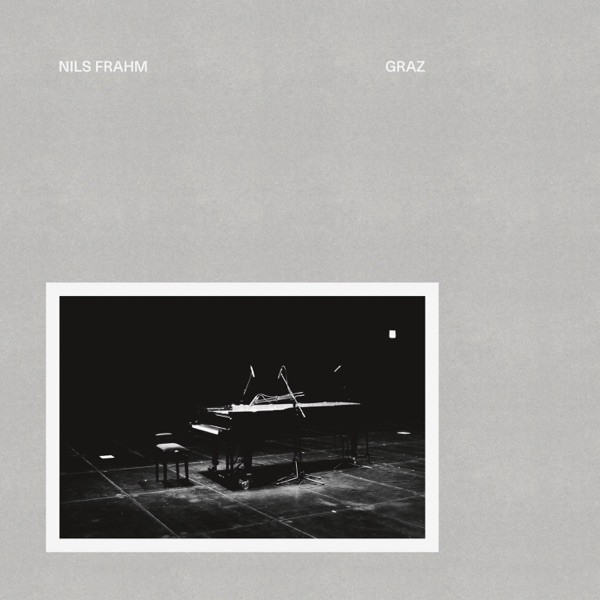Blood’s a Rover – Harlan Ellison – Review
Written by Staff on January 21, 2024
Blood’s A RA Boy and His Dog – Harlan Ellison – Review – by David James Keaton
Ever since Harlan Ellison won the 1969 Nebula award for “A Boy and His Dog,” his fast-talking, fast-moving, surprisingly emotional and hugely influential post-apocalyptic ode to his real-life best friend Abu, fans have been desperate for the “whole” story. For decades, various teasers would pop up promising “Blood’s a Rover, coming soon! For real this time!” The last teaser I came across was in the Richard Corben illustrated collection Vic and Blood, which contained two new short stories to bookend the award-winning classic. These new pieces, “Eggsucker” and “Run, Spot, Run,” were both interesting but mostly unessential additions to the world of “A Boy and His Dog,” which itself had already been expanded to novella-length for inclusion in Ellison’s The Beast That Shouted Love at the Heart of the World. But slightly swollen or not, that initial pulsing nucleus which introduced these two memorable characters still felt like a perfectly proportionate and self-contained adventure. It got in. It got out. Done. Instant classic. But now, with Ellison’s death, we have this mythical final project we never thought we’d see. And, like most people (probably), I’d filed away hopes of ever seeing this book in that “unlikely/probably bullshit” part of my brain, the place where I’d kept Ellison’s promises of the publication of The Last Dangerous Visions always being somewhere on the horizon, always just around the next corner.
So now that it has finally arrived, what the hell are we to make of this thing? If “A Boy and His Dog” was perfect on its own, and if the bookends were fascinating curiosities and not much more (and “Run, Spot, Run’s” bleak ending was supposedly a middle finger to fans who harassed Ellison to finish the novel), is it better to have Blood’s a Rover in this odd final incarnation? Sort of? I guess? I’m going to say, ultimately, yes. Sure, the version we get is an uncomfortable Frankenstein creation of spare parts; some long-dead, some reanimated, and some springing from the creator’s brain as recently as last year (according to interviews). In fact, I’ve actually been reading quite a few fascinating postmortem rebuilds lately, including David Foster Wallace’s A Pale King and Michelle McNamara’s I’ll Be Gone in the Dark, and this is probably the most effective of the three. At least, this reassembly makes the most logical sense. Even though the final third of the book (the section titled “Blood’s a Rover”) is in screenplay form and seems to be mostly material Ellison wrote in the late ‘70s for an abandoned NBC television series, his script directions and notes are so overwritten that you sometimes don’t miss his dense, engaging prose when the novel morphs into this leaner, more utilitarian format. It also helps that, because you are suddenly reading a script, you start flying though the book right to the climax.
However, when I thought about it later, this ultimate form of Ellison’s long-gestating project makes a lotta sense because this is a book that is concerned with adaptation, in both senses of the word, so of course it would wrap up as a movie. So instead of being the famous book that almost never was, now you get the movie spin-off TV series that definitely never was, and, in fact, the book is dedicated to the director of the film adaptation of “A Boy and His Dog,” L.Q. Jones (as well as Michael Moorcock). So think about it this way. Ellison has dedicated this strange hybrid follow-up of his original story to the creator of the film adaption, which was already its own interpretation (a decent one, too, starring a young, scrappy Don Johnson in one of his very first roles). It just feels kinda right, doesn’t it? And the screenplay section of this book, which this reader certainly feared would be the most jarring reminder that this was a hasty assembly and not really what the famously fussy author intended, actually fits surprisingly well into the overall vision.
But how is it? Well, first, the good stuff. Even if the expansion of the short story (first to novella, then to kinda/sorta “novel”) seemed indulgent and unnecessary, I’ve always imagined that Ellison found the idea irresistible once he pinned down such a phenomenal title. “Blood’s a Rover” is from a quote by poet A.E. Housman, referring to blood cruising the highways of our bodies (“Clay lies still, but blood’s a rover…”), but also it refers to a “rover,” of course, as in a dog, and the “Blood” in this book is literally the name of the mutt, however (follow me here because I can’t), Blood is not really the “animal” in this equation because a “rover” (or “roverpak”) in the A Boy and His Dog story cycle is actually a term for a special kind of human who needs a gang, so this “Blood” is, ultimately, not that sort of pack animal at heart, and not a “rover” at all, or even a “solo,” which is what they call the “boy” in the book, meaning we’ve circled all the way back to the beginning, and Blood is, and always has been, simply a dog, with all the better qualities that entails. Whew! But seriously, that’s a hell of a title, and even if James Ellroy got to the quote first to name a book after it, he didn’t give it nearly this kind of a workout.
There are also some interesting bells and whistles throughout, including something a bit like that jokey Werner Herzog daily affirmations calendar between chapters, interludes of snarky quotes from the “wit and wisdom” of Blood the dog himself. And these are admittedly very fun. Even if none of them are at the level of Ellison’s most famous zingers (“No one is entitled to their opinion. They are entitled to their informed opinion,” “F**k you, pay me,” etc. etc.), they still feel like they came directly from Ellison himself, which proves something we’ve always suspected to be true. He is that damn dog. Also, these quotes make for interesting breathers between chapters, to bridge the stories and more effectively glue them together, particularly the strange declaration of faith from the first third of the book (kinda out of character for the author? okay, maybe Ellison is not the damn dog after all) where “Blood” says to Vic and us, “Without belief, we would have no reason not to be savages.” Oh shit, shots fired, Richard Dawkins!
But what, if anything, is not working here? Good question, me! Well, here’s some of the weirder stuff; like what’s going on with the copyright symbol stamped next to Ellison’s name on every page? Oh, yeah, didn’t he sue The Terminator or something? I almost forgot. Also, I’ve always been a bit baffled by Blood talking in italics but then sometimes talking in quotes. Does this mean occasionally Ellison is deciphering his barking as words in the boy’s head, or is everything in the kid’s head? I’ve always assumed every dog’s bark we hear out here in the real world translates as “F**k! F**k! F**k!” but The Wire proved to us that this one word could still make for some surprisingly sophisticated sentences, from us as well as our canine friends.
One of my biggest gripes here was that “Eggsucker” as an opener to a novel, and as the beginning of this entire story cycle, has a lot less impact than it did as a follow-up tale. It’s sort of like the Better Call Saul paradox. Great show, but who would want to watch that as a lead-up to Breaking Bad? It would feel backwards. Okay, maybe that’s a bad example because Better Call Saul turned out to be surprisingly great on its own and “Eggsucker” will always need the lifeline of the larger narrative to survive. So how about this: Have you ever seen that YouTube video of Spike Lee in character as Mookie from Do the Right Thing twenty years later? It’s fascinating to catch-up with where Mookie the delivery dude is now, but you would not want to watch that clip before the events of Do the Right Thing would you? It would totally rob you of surprises and dispel suspense from the events of that film. Okay, maybe that example doesn’t work either because the clip doesn’t spoil the all-important dynamic of Mookie first interacting with the owner and staff of Sal’s Famous Pizzeria. Wait, okay, I’ve got it. How about the intro to Jay and Silent Bob Strike Back, showing the two of them as babies in front of the convenience store? Now imagine that intro playing before Clerks. It doesn’t work, right? Because even though it is a prequel of sorts, it’s starting with answers to the characters before Kevin Smith even asks the questions. Hot damn, that example was perfect! I hoped that if I just kept typing that would happen. But, yeah, so the opening to this whole deal should always be, and always has been, the opening of the short story turned novella “A Boy and His Dog.” Jump around in time, fine, but when you have an introduction as straightforward as that, why mess with perfection just for chronology’s sake?
As a story though, “Eggsucker” is pretty decent. It’s from Blood’s POV, which is a fun switch from Vic’s narration in “A Boy and His Dog,” though Blood calling him his “pet boy” in this new opener is a bit on the nose and hinders some of the more subtle reversals of boy and beast later on. Also, did we really need to see the “burnpit screamer” scene as described in “A Boy and His Dog” fleshed out here in real time? This redundancy makes the later descriptions a bit confusing. The efficiency of the quick detail in “A Bog and His Dog,” where Vic describes the mutants as “all ooze and eyelashes” was effective because it was also sort of baffling. To find out that these screamers indeed had long, spider-like eyelashes (but crazily enough are described as having no eyelids? Huh? Magnets, how do they work?) sort of demystifies things and adds an unnecessary new layer of confusion. And it doesn’t help that, with this chronological renovation, the characters are now going to reminisce about this moment just a few pages later, making the timeline and the adventures of these characters feel even smaller, more than a little bit like a Facebook timeline, where people flash back and ponder shit mere seconds after they did it.
And speaking of “small,” there isn’t a whole lot more going on as far as world-building that we didn’t already know in “A Boy and His Dog.” There’s villain Fellini from the film version, various other interchangeable murderous scavengers and rivals, and a little more about the “downunder” bomb-shelter societies of squares. And maybe one or two extra supernatural elements; like the shrieking, radiated mutants, and some Lord of the Rings-esque giant spiders. All in all, the world of this “novel” still feels like exactly the size and scope of an excellent short story.
But when you get to the (now repositioned) centerpiece of the book, “A Boy and His Dog,” you quickly remember why this world has endured, and you can see the direct throughline to everything it went on to inspire, in books and film and vice versa. It’s not an exaggeration to say there would be no Mad Max (or its imitators) without L.Q. Jones’ film adaptation, and probably no Dark Tower either. But people familiar with the novella will start to notice some hiccups here with 11th-hour tweaks that have been made to Ellison’s Nebula-winning manuscript. These are the sorts of little things that annoyed readers with the “uncut” version of The Stand, that obsessive tinkering and annoying updating for no good reason. For example, there’s extra repetition of lines and stories-in-stories (Blood’s gag of calling Vic “Albert” is now mentioned twice), and now there’s some extra “tough guy” talk coming out of Vic’s mouth that, at best, serves no purpose, but, at worst, steps on his punch lines. For example, when Vic checks his guns with some scavengers (called “Our Gang,” get it?) so that he can relax and see a movie in a real live theater (“It’s hallowed ground, Highlander!”), there’s an extra insult where he warns a goon that if there’s any rust on his weapons when the movie’s over, he’ll “wake up with a crowd around him.” Huh? What made Vic so unique in this murderous landscape is how he is one of the few holdout “solos” without a “roverpak.” I mean, it’s a minor point, and a fun insult Harlan Ellison probably used in real life, but, in the world of this book, who exactly would Vic’s “crowd” be?
Ellison has also changed Vic’s gun of choice from a “Browning” to a “Husqvarna.” And what the hell is that, you ask? Well, I Googled it and f**king Garden Weasels came up, so I have no clue. But it sounds like the hat company Lou Costello worked at. This weird weapon swap possibly has something to do with Corben’s beautiful cover painting, where Vic is holding a long, detailed firearm, as the foreword by editor Jason Davis explains that this cover art existed long before the book. Or maybe not?
Which leads us to the final section and the conclusion of the book, the screenplay section “Blood’s a Rover.” Admittedly, it’s a crafty way to continue to stretch the material almost to the point of breaking. And though this section takes place after the events of “Run, Spot, Run,” the screenplay included here reads very much like an extended prequel of how Vic and Blood met, except the New Girl named “Spike” (Get it? Spike? Still flipping that script on who’s the peoples and who’s the doggies!) is the stand-in for these moments that we remember Vic flashing back to. It’s easy to imagine that this screenplay material originally began as Vic and Blood’s extended origin story, a grand-slam “Eggsucker” breakfast, if you will, connecting the dots of many of the details in “A Boy and His Dog.” Blood teaching Vic about the importance of reading canned goods (in these tales, cans of corned beef and beets are currency and litter the recently-nuked landscape, unlike most post-apocalyptic tales where those are the first things to get yoinked) was an important teachable moment, often alluded to in the original novella. But here we get to see this new character, Spike, get the actual tutorial we’d only previously imagined. Weird!
So, as a conclusion to the entire saga, it’s not entirely satisfying. Conceptualized as a TV show, it’s sanitized, which gives it a sort of YA gloss and sits uncomfortably with the hard R-rating of the centerpiece tour de force. Also, despite being written in the ’70s, the script has some updated groaners, like an extended siege on a Walmart (those were rare in the ’70s, right?), even though more dated jokes were left alone, like the anti-climactic Richard Nixon gag that ends the book and seems like low-hanging fruit begging for an update these days. But probably the most frustrating aspect of this final section was, for me, the new implications of the telepathic abilities that are introduced when the dog is, for the first time in this entire narrative, communicating with two people simultaneously. The backstory explains that the dogs are psychic science experiments engineered for military use, and the humans are merely receivers, so for both humans in this new love triangle to be able to “talk” to Blood at the same time seems to suggest that either the humans have these abilities, too, or the dog is less “psychic” when he bonds with individual brains and instead possibly just transmitting on a different frequency? I feel like this kind of reduces the dramatic impact of the one-on-one nature of Blood’s mindmelds, as well as the “man’s best friend” mantra of the stories a bit. Or, maybe like the dog in this book, I’m just overthinking things.
But the new-fangled misadventures of “A Boy and His Dog and Their New Girl Pal Spike” really does work way better than it has any right to, even if, just like the unnatural opening, it makes for an ending that can’t quite touch the famous last line of the original short story. The book certainly wobbles with the new material, but it’s still worth the read. And the final storyline is not as unwelcome as, say, the long, pointless page retrofitted to the climax of the “A Boy and His Dog” novella where Vic and Quilla June bicker as they search in vain for a mortally injured Blood after they escape the town… only to circle back around to find him buried near the mineshaft where they’d originally climbed out. What purpose did that page ever serve? Sadly, it was probably just to get more whining out of the Quilla June character (some extra condescending “How’s your doggie?” quips) so that dumbasses today wouldn’t miss the Big Twist, as this has always been a story famous for its twist, as well as the controversy over its original last line, where Vic says simply, “A boy loves his dog,” which became even more famous after L.Q. Jones could help but to add his own final zinger on top of a zinger to his movie version (“Well I’d say she certainly had marvelous judgment, Albert, if not particularly good taste.”). But every section of this book ends with a zinger like that, and there are even those “wit and wisdom” zingers in between (how many times can I say “zinger”??), so even if these last lines don’t all land as hard as Jones’ or Ellison’s standalone story, they’re still entertaining enough. And they remind this reader that Blood is, above all, a sarcastic little beast shouting love and anger at the heart of America, and his spirit haunts the book right alongside the author’s.
Speaking of haunting! I want to wrap this up on one last detail Ellison inserted into this new edition, where he, as Blood, talks about his wounds being bandaged with strips of the dead girl’s frilly blue dress. This, admittedly, does help tie in the memorable third section, “Run, Spot, Run,” as it has this sort of haunting by-proxy subplot, where the dog, due to his telepathic link with the boy, and with the help of munching on a psychedelic lizard, can now actually see projections of Vic’s terrible guilt at killing the love (at the very least “lust”) of his life to feed her to man’s (I mean boy’s) best friend. This visualization of Vic’s torment is a fascinating way to sidestep the cliché of having something as goofy as Quilla June’s literal ghost floating around, but, more importantly, it might offer me my only chance at trying out one of these notorious zingers that litter the landscape…
What I’m saying is, this was a very clever way to have her ghost and eat it, too. Pow! Goodnight, Cleveland! I’ll be here all week.





 RadioRadioX
RadioRadioX